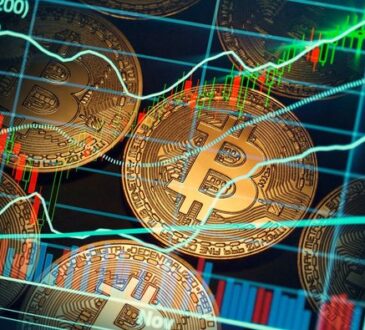
What is an exchange rate?
An exchange rate tells you how much one unit of currency is worth compared to a different form of currency. These rates determine the price for exchanging one currency for another.
Many people use exchange rates when they travel abroad and need to convert the cash in their wallets for the local currency. However, exchange rates can go beyond just fiat currencies, which include most modern government-backed currencies, like the U.S. dollar; they can also include cryptocurrencies.
Advertisement
How are exchange rates determined?
A currency’s exchange rates are determined by the type of regime a monetary authority — such as the Federal Reserve System in the U.S. — chooses to employ. Although there are several kinds of regimes, they generally fall into two broad categories:
-
In a fixed exchange rate regime, rates are tied to another currency or a basket of currencies. To prevent volatility, fixed exchange rates are generally pegged to currencies like the U.S. dollar and the euro, which are more stable. A monetary authority will buy or sell its currency to make sure the rate remains at its target value or within a target value band.
-
In a floating exchange rate regime, rates will fluctuate generally based on supply and demand in the foreign exchange market. Some examples include the U.S. dollar, the euro, the British pound and the Japanese yen. A monetary authority is less likely to influence exchange rates through buying and selling its currency.
Exchange rates are constantly in flux, depending on geopolitical and market conditions.
Bid price vs. ask price
When you exchange currency, you will notice that there are two prices listed: a bid price and an ask price.
Say you’re coming back from a trip to England and have extra British pounds you want to exchange for dollars. When you return, you visit a bank that gives you the following exchange rates for the British pound:
GBP 1 = USD 1.2315 / USD 1.3752
The bid price is listed first, followed by the ask price.
-
The bid price is how much the dealer will spend to buy one unit of currency. If you wanted to return pounds for dollars, the dealer would give you $1.23 for each pound.
-
The ask price is the amount at which the dealer will sell one unit of currency. If you were going to England and wanted to exchange dollars for pounds, you would have to pay $1.38 for 1 pound. If you wanted to buy 100 pounds, you would pay $137.52.
How can you exchange currency?
There are generally two markets where someone can exchange currency:
Foreign exchange market
Investors trade currencies on the forex market 24 hours a day, five days a week. In the forex market, there are two types of exchange rates you should know:
-
Spot exchange rates tell you how much it would cost to purchase one unit of currency if you made your trade right now.
-
Forward exchange rates are mutually agreed upon rates between two parties for a transaction made at a future date.
However, forex trading is not for everyone. It’s complex and highly speculative, so individual investors should make sure they know what they’re doing before jumping into the forex market.
Retail currency exchange market
Most people don’t have experience with the foreign exchange market, but many have transacted on the retail currency exchange market.
For example, when you exchange your extra British pounds for U.S. dollars after a trip to England, that is a transaction on the retail currency exchange market. You could go to a bank, credit union or currency converter to make the exchange.
When you look up exchange rates online or in a financial publication, you’ll often find rates better than what you’d get with a dealer. That’s because the rates you see are from the foreign exchange market, where high-value transactions occur.
Dealers typically source their money from the foreign exchange market, so they will pass along their costs to you as a customer. They’ll also want to make some profit from your transaction, meaning the exchange rates you get are lower.
Example of exchange rates
Exchange rates are commonly written as one currency per another currency. Each currency has its own three-letter currency code that is used for exchange rates.
For example, if you wanted to know how many euros you can exchange for $1, you would look for EUR/USD, or euros per U.S. dollar.
Say the EUR/USD rate is 1.0820. That means you can get 1.0820 euros for each U.S. dollar you exchange.
If you wanted to exchange $100 for euros, you would multiply $100 by 1.0820.
$100 x 1.0820 = 108.20 euros
You can also calculate how many dollars it would take to buy 100 euros. To do that, you would divide 100 euros by 1.0820.
100 euros / 1.0820 = $92.42
Current forex trading rates
The chart below shows two paired currencies and reflects what one unit of the first listed currency is worth in the second listed currency. For example, the first row shows how much one euro is worth in U.S. dollars.
Forex trading quotes are pulled from Google Finance and may be delayed up to 20 minutes. Data is solely for informational purposes, not for trading purposes.



